More Samples, More Questions, More Concerns: Enough is Enough
 Background
Background
On January 6, 2016 concerned Shawnigan Lake residents invited the media, politicians and the public to come and see the contaminated soil facility operating on Stebbings Road and to listen to their concerns directly. Residents, local councillors and others were in attendance to answer questions. The media and politicians were also taken on helicopter rides over the site in order to get a bird’s eye view of the operations. Indeed I was one of the many politicians who was on one such helicopter ride.
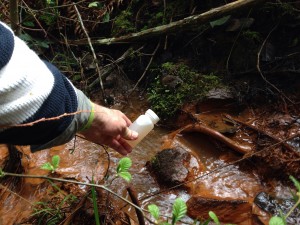 I have written earlier on the wisdom of dumping contaminated soils in the Shawnigan Lake watershed and I have twice collected samples from the effluent running off Lot 21, immediately beside the operating contaminated soil facility.
I have written earlier on the wisdom of dumping contaminated soils in the Shawnigan Lake watershed and I have twice collected samples from the effluent running off Lot 21, immediately beside the operating contaminated soil facility.
The results of my water samples collected on April 2, 2015, together with my observation that a significant amount of fill had over run Lot 21 and was on the neighbouring parkland, led me to subsequently ask the Minister of Energy and Mines and the Minister of Environment questions during Question Period.
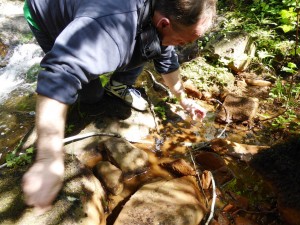 The results of my sediment samples taken on May 15, 2015 at the same site as my earlier water samples led me to ask the question as to what, if anything, has been buried on Lot 21 that could produce the Thorium, Lead and other heavy metal enrichment in the sediments.
The results of my sediment samples taken on May 15, 2015 at the same site as my earlier water samples led me to ask the question as to what, if anything, has been buried on Lot 21 that could produce the Thorium, Lead and other heavy metal enrichment in the sediments.
As the months have passed, residents of the Shawnigan Lake region have continued to raise substantive concerns as to whether or not the operations at the contaminated soil facility are in compliance with the requirements of their relevant permits. On November 16th I rose in the legislature to call for an emergency debate on a recent failure of the contaminated soil site storm water containment and clarification system at the site. I did this after Island Health issued a no-water use advisory “advising residents not to use water taken out of the lake from the south end of Lake Shawnigan, south of Butler Avenue and Verlon Road, due to suspected overflow of water from South Island Aggregates’ site.” This means that residents were being advised “not to use or draw water from the area of the lake for residential or commercial use, including bathing, personal hygiene, drinking and food preparation.”
The Water Containment and Clarification System
It doesn’t end there.
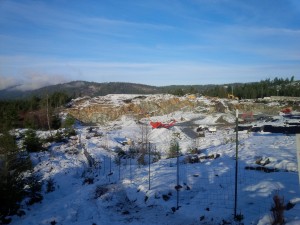 On December 1, 2015 I issued a press release calling on the BC Government to immediately cease operations at the site after the Cowichan Valley Regional District released a report from Thurber Engineering Ltd. The report identified serious concerns about surface runoff and throughflow potentially becoming contaminated but not adequately being contained or treated. In particular, the Thurber Engineering Ltd report noted that:
On December 1, 2015 I issued a press release calling on the BC Government to immediately cease operations at the site after the Cowichan Valley Regional District released a report from Thurber Engineering Ltd. The report identified serious concerns about surface runoff and throughflow potentially becoming contaminated but not adequately being contained or treated. In particular, the Thurber Engineering Ltd report noted that:
“The presence of the large volume of water emerging from under the rock armour at the head of the ephemeral stream indicates that runoff storm water sourced from the SIA site is bypassing the sediment pond (i.e by flowing under it) and is being discharged directly onto the land owned by the CVRD”.
This occurred despite the fact that the BC Government mandates that all surface water is required to be “contained on the property and treated in accordance with the permit”.
The water containment facility is shown in Figures 1a and 1c. Figures 1b and 1d illustrate a pool of water immediately beside the treatment facility. The Thurber report identifies this as potentially a source of water that feeds the ephemeral stream and bypasses the containment facility. Frankly, it would be incredibly easy to verify this by simply tagging the water with a dye as is commonly done in municipalities when potential storm/sewer crossovers are detected.
Figure 1: Photographs of the water containment system and the standing pool of water immediately beside the containment system taken on: a), b) November 16, 2015; c), d) from a helicopter on January 6, 2016.
In my view we have a serious situation where contaminated soils are being delivered to the site on an ongoing basis. Yet at the same time very troubling questions have been raised by an independent engineering firm about the functioning of the water containment system. I am beyond astounded that the Ministry would continue to allow contaminated soils to be delivered while the “permittee and their qualified professional(s)” review the situation as per the functioning of the water containment system.
I also remain troubled by the frequent referral to an ephemeral stream in numerous reports. By definition, an ephemeral stream is one that exists “only briefly during and following a period of rainfall in the immediate locality.” Yet I was given a tour of the contaminated soil facility on August 5th, 2015 and it had been very dry. At that time the stream was running and the pond was still present. This suggests to me that a component of water found in the pond has originated from below the surface.
Sulphur and Sodium Chloride Contaminants
The Shawnigan Lake residents most recently have been expressing increasing concern over the fact that contaminated soils high in sulphur and salt (sodium chloride) from Pacific Coast Terminals in Port Moody are being dumped in the operating facility.
Water in the “ephemeral creek” has been tested several times by the Ministry of Environment. The Ministry of Environment reported (see SW1) that water in the ephemeral creek (about 15m from where the containment pond discharges into it) on November 14, 2015 had:
- a sulpher concentration of 56.1 milligrams per litre
- a sodium concentration of 21.8 milligrams per litre
Samples collected by the Ministry of Environment on November 17,2015 at the same location on November 14 revealed (see E292898):
- a sulpher concentration of 23.2 milligrams per litre
- a sodium concentration of 9.16 milligrams per litre
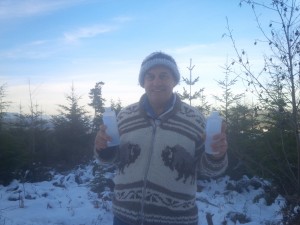 A summary of these results was put together in the media package provided by Shawnigan residents on January 6, 2016.
A summary of these results was put together in the media package provided by Shawnigan residents on January 6, 2016.
On the same day I took the opportunity to collect further independent samples. After the aerial tour of the site, I hiked around the property and collected two samples (Figure 2a and b) in the vicinity of where the Ministry of Environment collected their samples. I collected a third control sample in Shawnigan Creek upstream from the contaminated soil facility at almost the exact same location of where I collected my control sample in my earlier sediment analysis (see Figure 2c).
Figure 2: Photographs of the location of where the two water samples were taken in the ephemeral creek: a) at a location a few metres upstream from where the Ministry of Environment collected their water samples (UP POND in the January 6, 2015 water analysis data); b) at the location where the Ministry of Environment collected their water samples (DOWN POND in the January 6, 2015 water analysis data). c) Photograph of the location where I collected my control sediments for my earlier analysis. The control water sample was taken a few metres north of this location (Control at bridge in the January 6, 2015 water analysis data).
My three resulting water samples were analyzed by Jody Spence at UVic using a Thermo X-Series2 Quadrupole ICP-MS. All water samples were filtered through clean (new) polyvinyl filters (0.45 um). A separate filter used for each sample. The first 10 mL of each sample was flushed through to condition the filter before collecting the 10 mL aliquot for analysis. After filtration, the samples were acidified with 0.2 mL of 16 Molar Environmental Grade Nitric Acid.
The resulting January 6, 2015 water analysis data reveal the following results:
Sample 1: UP POND; Figure 2a
- a sulpher concentration of 33.3 milligrams per litre
- a sodium concentration of 13.5 milligrams per litre
Sample 2: DOWN POND; Figure 2b
- a sulpher concentration of 32.4 milligrams per litre
- a sodium concentration of 13.1 milligrams per litre
Sample 3: Control at bridge; Figure 2c
- a sulpher concentration that was undetectable to the limit of machine precision
- a sodium concentration of 1.85 milligrams per litre
These results are consistent with the elevated sulpher and sodium concentrations found by the Ministry of Environment back in November.
Two additional observations are worth noting. On the day I collected my samples there was no water pooled in the water containment facilities sedimentation pond (it was largely covered with snow). The pond immediately beside it was quite large and the surface appeared to be frozen. In addition, a distinct smell of sulpher hydroxide was noted at the property line where the containment facility allows water to enter the ephemeral creek.
Summary
Based on several independently-collected water samples collected over the last few months it is clear that water in the “ephemeral creek” leaving the property contains elevated levels of sodium and sulphur. The fact that sulphur was undetectable in the control sample makes it pretty clear that the contaminants originate from the Pacific Coast Terminal soils that have been dumped in the operating facility.
While it is clear to me that there is no immediate health concerns to the residents of Shawnigan Lake from the samples I collected, questions still remain. In my opinion it would be prudent for the Ministry of Environment to immediately cease operations at the facility in order to:
- Ensure the water containment facility is actually functioning as required by permit;
- Determine where the water in the pond is coming from and whether it drains into the ephemeral creek;
- Conduct an assessment as to the cumulative effects of high sodium, sulphur and potentially chemicals that will make there way to Shawnigan lake through the ephemeral creek. The site has only just opened and will be in operation for decades.
Failing to take these immediate steps I believe would be a continued dereliction of duty by the Ministry of Environment.
Leave A Comment

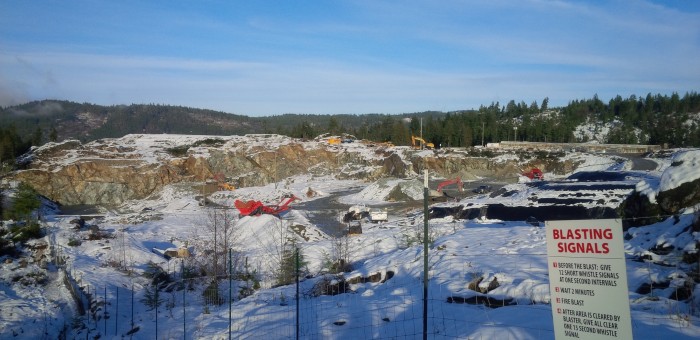
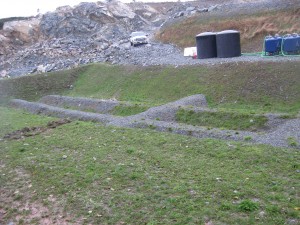
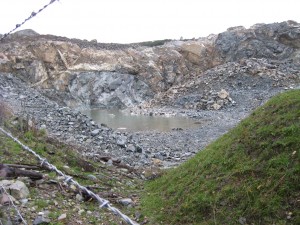
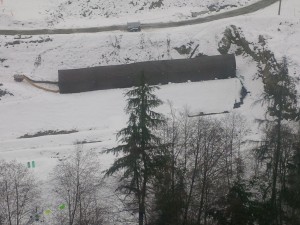
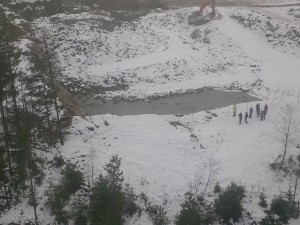
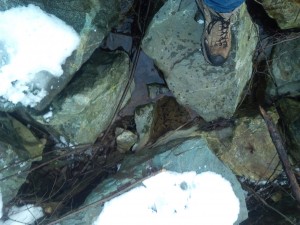
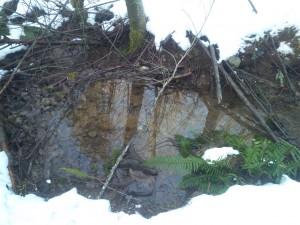
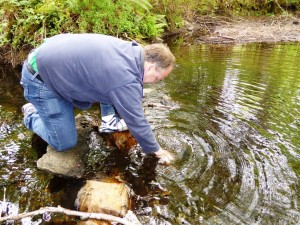



4 Comments
On the north side of Shawnigan lake is the Cobble Hill “Quarry Lake”
I was told that this limestone quarry was abandoned when they struck water at the bottom ~80ft below the current water level…and the quarry filled up with pristine water….
Now I am not a hydro geologist but it seems to me that the aquifer that filled “Quarry Lake”, is the same that serves: Shawnigan Lake, Sooke Lake and sits precariously below the SIA contaminated waste site…
and this is a terrifying thought….
Laurel Mcintyre
Why do they have to bring soil to the Island from the mainland. How do they get it here? They bring it on the ferry at a discounted rate?
The idea that if it does not leak out, now, it is alright to allow this type of dumping of toxic waste to be carried out . This being allowed as a MO is a showing that ignorance of common principals , rules the roost…. When it leaks out at some future date, of which it will and has to, why was and is this scenario still being ignored?. The liner will eventually disintegrate. That is a fact. To those in power, now , explain this eventuality and indeed the inevitable disaster that you are now a part and parcel of and to.., … I await their knowledgeable reply. Don’t hold your breath… These are very poorly placed people who dont want to show their gross ignorance ..
Once again, you have supported what the residents have been saying for years…this decision has put our water supply at great risk for contamination of our watershed and our lake. The fact that in 2009, the MOE designated our Aquifer as Class A, highly vulnerable to surface contamination, leads one to wonder about the insanity of their subsequent permits. For the MEM to allow blasting for gravel and the MOE allowing contaminated soils as fill is a serious breach of their Ministries to follow their own mandates for the protection of the health and safety of our community. Contamination of our lake will effectively destroy our community’s financial future! With a Judicial Review starting Jan. 11 to address the fraud and perjury throughout the permit process and the EAB hearing, there appears to be no sense of public accountability in allowing these companies to continued operation.